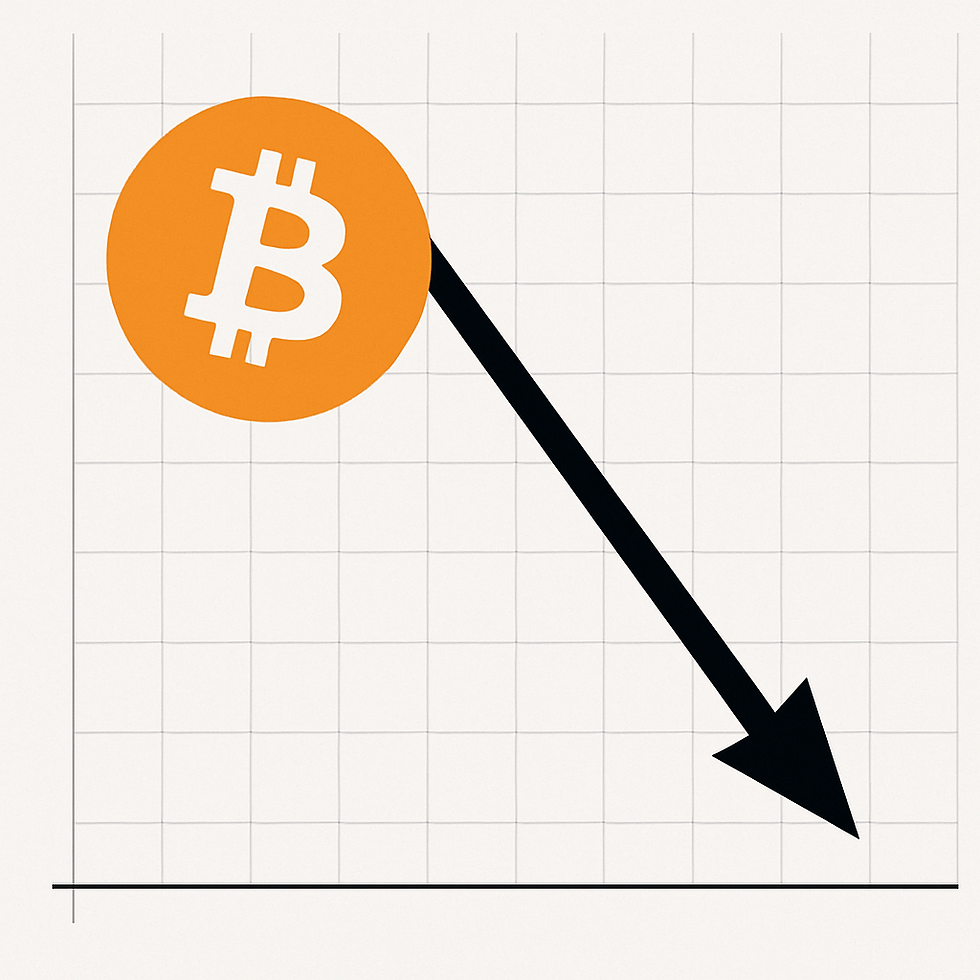Bitcoin’s Illusory Floor: Why Rising Mining Costs Expose a Structural Flaw
- WireNews

- Oct 11
- 2 min read
by Ram ben Ze’ev

For years, Bitcoin enthusiasts have repeated a mantra: that the “cost of mining” creates a kind of gravitational floor under the price, guaranteeing its long-term appreciation. In theory, this sounds compelling. Unlike fiat currencies, Bitcoin has a fixed issuance schedule. Unlike gold, its supply cannot be expanded in response to higher prices. And because mining becomes progressively more difficult, the cost per coin should rise over time, supposedly ensuring that price follows.
But this narrative conceals a critical weakness. The “floor” isn’t based on intrinsic value; it’s based on rising production costs — chiefly electricity. And historically, energy costs have only moved in one direction: up.
ADVERTISEMENT: Invest Smarter. Zero Fees. Robinhood Trading Platform
Gold mining faces similar cost pressures, but gold’s supply is flexible. New deposits, technological advances, and shifts in energy inputs can stabilise production costs. Bitcoin has no such release valve. Its protocol is rigid, and as network difficulty increases, miners compete for the same finite issuance. When electricity costs rise globally, every miner’s cost structure rises together. The so-called floor is not a bedrock — it’s a treadmill, powered by real-world inflation.
In practice, this means Bitcoin’s price can rise even if demand doesn’t, simply to keep mining economically viable. This is not evidence of inherent worth, but of cost-push inflation. A more expensive Bitcoin doesn’t necessarily reflect broader adoption or greater utility. It may simply reflect the fact that it has become more expensive to keep the network running.
This exposes a structural flaw in the idea of Bitcoin as a store of value. Gold has maintained purchasing power for millennia because it has intrinsic properties, industrial and ornamental uses, and a cost structure that can respond to market conditions. Fiat currencies are underpinned by states and legal frameworks. Bitcoin, by contrast, relies on an ever-increasing mining cost to sustain price. If energy costs spike dramatically, Bitcoin’s nominal price must follow — or mining collapses. Either outcome undermines its supposed stability.
ADVERTISEMENT: Invest Smarter. Zero Fees. Robinhood Trading Platform
After more than a decade of real-world performance, it is increasingly difficult to see Bitcoin as anything other than a shell game. Its price is driven less by intrinsic demand than by the escalating cost of sustaining its own infrastructure. In the short term, speculative cycles can mask this reality. In the long term, however, cost inflation without intrinsic value is not a foundation — it’s a liability.
When compared to gold or even fiat currencies, Bitcoin begins to look less like “digital gold” and more like a commodity whose price must constantly rise simply to stand still. That is not the hallmark of a stable store of value. It is the definition of fragility.
>>>> BUY ME A COFFEE <<<<
###
Bill White (Ram ben Ze'ev) is CEO of WireNews Limited, Mayside Partners Limited, MEADHANAN Agency, Kestrel Assets Limited, SpudsToGo Limited and Executive Director of Hebrew Synagogue








